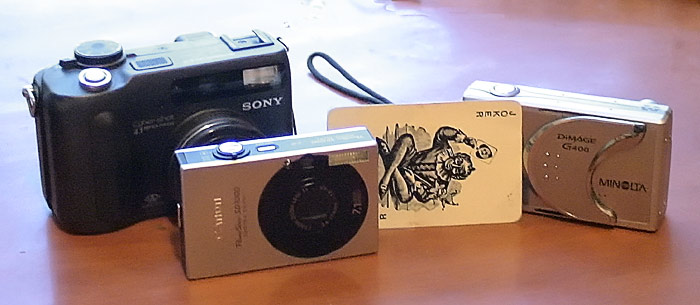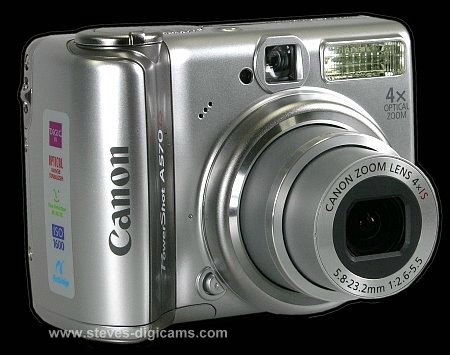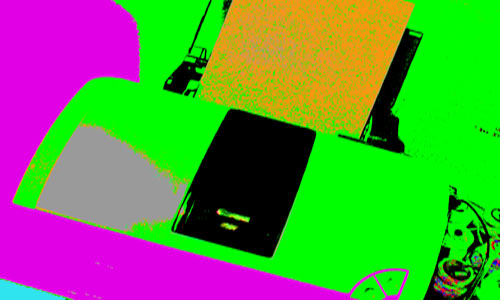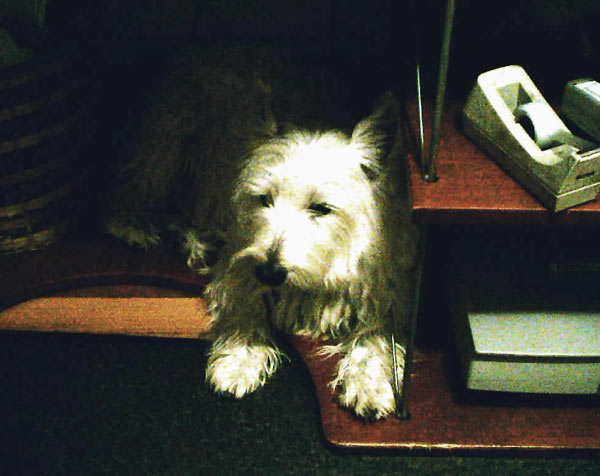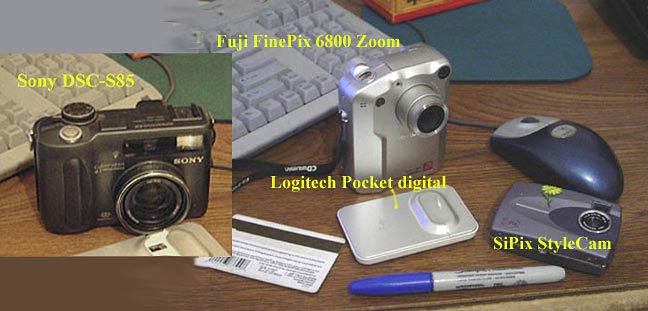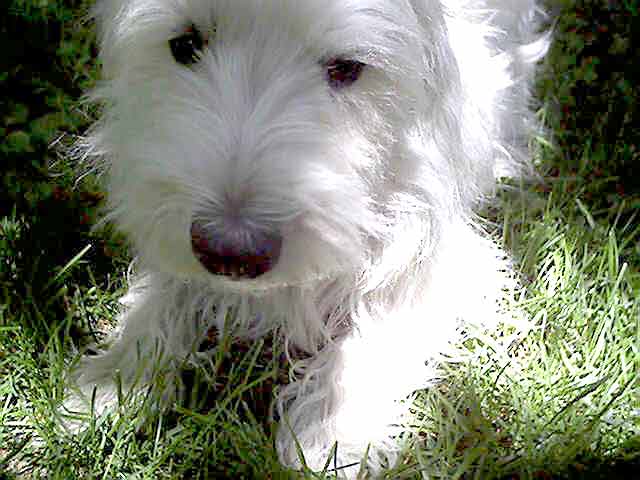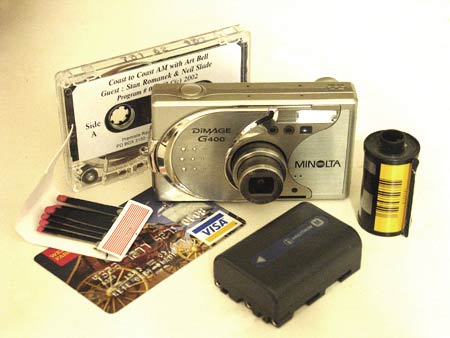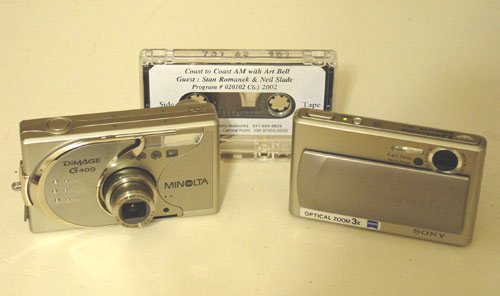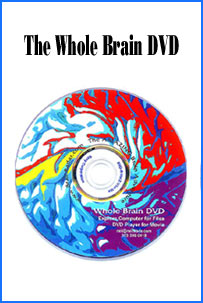Digital Photography Information, Tips, Recommendations,
Reviews, Printer, Battery, Memory Card Info
This is PAGE ONE
UPDATE December 2007
Shown: L to R 2001 Sony DSC-S85 4MP manual and automatic 2007 Canon SD1000 7 MP automatic with semi-manual 2003 Minolta G400 4MP automatic with semi-manual
Sponsored by
|
|
Megapixels don't always indicate
the quality of a camera.
There is a HUGE variety in camera
image quality from the exact same number of megapixels.
Most of us don't need any more than
4 megapixels, and normally we will shoot with less to same memory card
space. How often do you print 8X10 photos or bigger? For 4X6 photos or
5X7 photos, or extreme cropping/editing of photos, 2-3 megapixels is
PLENTY for a good sharp photo.
There are 8 megapixel cameras for under $1000 now. These cameras take astoundingly detailed pictures. But unless you are an OBSESSED hobbyist or professional, this is total overkill. I recommend cameras you can put in your pants pocket for everyone except professionals or diehard hobbyists. If you are a pro, this calls for a bigger camera. Otherwise, it makes no sense to have an SLR sized camera, none. This is almost a non-issue however, as most camera makers are making smaller cameras for consumers.
Cameras and lenses are shrinking--
for convenience. But often, the price of miniaturization is in
quality, then features and ergonomics. A tiny camera is cute- but it
probably does not compare in usability with a normal sized camera. The
very best cameras have
a decent piece of glass. Once you start
reducing the lens size, you generally reduce light, and sharpness. Pentax,
Canon, and others make some nice super subcompact and subminiature cameras,
some of them quite expensive-- but none produce as good quality photos
as the standard sized cameras.
Another thing to consider is BATTERY SIZE. My older S85 takes Sony's M series batteries, which is the same battery for my compact Sony camcorder. This battery will take- hold on to your hat: 3000 PICTURES before recharging. Compare this with the 150- 200 or under photos most compact cameras take. I use the LCD ALL THE TIME, so small camera battery life, basically SUCKS big time. Small batteries-- you need SEVERAL SPARES on serious shoots. When you have a little teeny camera-- it has a little teeny battery that runs out faster. Think about that. Okay, batteries are getting more efficient- but there are limits and tradeoffs. Look at battery life.
There are a few exceptions in the
size arena- I've looked more closely at camera's like the Sony T1--
which is a very compact 5 MP and it produces very good imaging in good
light, but
reduction in size comes at a price-- It is a $500 mostly automatic camera.
It doesn't work well in low light, or beyond its 5 foot flash range.
The Minolta G400 ($240 online) is vastly more flexible with full
manual controls, is barely bigger, and is actually lighter. An Olympus at 3 MP (more pixels than most people will
ever really need) costs even less. The Minolta XG is also a really
tiny camera-- not quite the resolution of the T1, but half as much
money as the T1. You have to decide if you are ever going to need such
microscopic improvement to pay twice as much or more for it for the
same size camera. Think carefully.
BUT, if you're actually contemplating the comparative quality of cameras and their photos, what you've got to do is really compare pictures side by side from different cameras you are considering.
I've posted sample picture links
for my favorite cameras below. Otherwise nearly all camera pictures
can be compared at
these two excellent sites:
Steve's Digital Photos
which seems to have
a more complete selection of reviews as well as photos.
Steve takes the exact same photos for
every model camera, so you can really compare. The Comparometer
below does the same thing.
My favorite photo to
compare is the red brick school building on Steve's site -- taken
in the real world, outside, with a subject with a lot of light
variety, color, and detail. Here's where you'll really pick up the
differences in cameras- look under SAMPLE PICTURES for each camera.
The Comparometer below does the same thing, and allows you to compare photos from one camera right next to another on your computer screen. The list, however, is not quite as up to date as Steve's above. Imaging Resources
Dave also posts reviews here http://www.imaging-resource.com/WB/WB.HTM--
but like many web reviews, it lumps highly dissimilar cameras, and
gives them equal recommendation, when picture quality may be quite different.
Beware.
If you just need a camera for home
snapshots and vacation-- gosh, any 2MP camera over
$125 will do any more. They all
fall into the category of taking good photos and snapshots. Easy- pick
your bells and whistles, how much you want to spend, go with the major
manufacturers.
PAY ATTENTION HERE: Have no fear-- most name brand cameras out there are good. It's really hard to buy a BAD digital name brand camera any more. But some work better, and often significantly better than others. So, if you don't care that much- you're lucky. If you do care a bit, or a lot- I've done your homework for you- beyond what many of the camera review web sites have done- I've narrowed the field down to the essential best cameras out there. I've owned and used a lot of cameras, more than most people. So I don't give this advice lightly. I am a stickler for image quality, and as long as a camera is reasonably usable, this is my most important criteria for judging a camera's worth. Zoom amount on a camera is nice- but it's not that important unless you are going to Africa and taking pictures of birds 500 yards away. Most of us take pictures of objects that are in our normal field of vision. In the case of a small objects more distant, if your camera has decent imaging, you can crop and enlarge. Don't put too much emphasis on zoom ability. Finally, if you think $150 or more is a lot to spend on a camera, remember this- you never ever will buy film again (or pay for processing if you print on web or at home.)
MY FAVORITE CAMERA-- I don't think I have one anymore. Big cameras take the best pictures and have better control ergonomics. Little cameras are convenient, yet sacrifice something in upper levels of quality. Figure out what is most important to you- perfect pictures or size of camera. I would tend to favor perfect pictures myself. I have a really hard time believing any magazine reviews- they are often way way off. I've compared my discontinued production 3 year old Sony S85 ($200 or less for like new on Ebay- originally $799) to all the new cameras out there-- under $1000, its hard to beat. Maybe the Canon G5 at $599. Good Camera Value: The Minolta G400. $234 online at buydig.com (reliable, fast). This is a very small 4 megapixel, camera (built like a tank) that takes very sharp and accurate images at nearly 1/4th the cost of my Sony S85 from 3 years back. It outperforms the S85 in some ways (though not all ). The 400 rivals its 6 megapixel big brother in some features, battery life, AND in some imaging (The 600 seems to blur on the edges especially left at widest). At 15% smaller size and $100 cheaper- Its an excellent value. Get SEVERAL extra batteries however.
G400 sample photo: http://www.steves-digicams.com/2003_reviews/g400/samples/PICT0150.JPG My own G400 photo here- Note this photo has got major compression for the web- and it's still AMAZING in rich accurate color and sharpness: http://www.neilslade.com/gifs/Mchurchweb.jpg 200K I took the time to actually compare the $240 (online) G400 and the nearly twice as expensive $425 (online) Sony T1 in GREAT detail, examining results on a computer monitor as well as 8X10 prints on the state of the art Canon i960 printer. Here's what I found out: G400 and T1 detailed COMPARISON --- with Sony S85 commentary ADDED
Under $300: Otherwise, barring the Minolta above, I like any Olympus for quality and value and nice size. This is a totally reliable and GREAT camera manufacturer. You can't lose, period. Fine for most families and casual photo taking. I have a small Olympus film camera as do millions of others. The Minolta G400 is a bargain 4 MP at $235 online.
Other small cameras: Okay, the Sony P100 ($399) is an okay choice, and very compact. The W1 is better under low light, but a bigger camera. Good are also the Canon S410 and S500 Elphs. There are other good and decent compact cameras-- I bought the Minolta G400 after looking at them all. Sony cameras have the best lack-of-repair-needed records, followed by Canons. Sample photo P100: http://www.steves-digicams.com/2004_reviews/sony_p100/samples/dsc00142.jpg Sample photo S500 Elph: http://www.steves-digicams.com/2004_reviews/s500/samples/img_0781.jpg G400 sample photo: http://www.steves-digicams.com/2003_reviews/g400/samples/PICT0150.JPG
Enthusiast/Hobbyist/Pro: Any more, there are SO many great cameras in this price range- you've got your work cut out for you. At $599 the Canon G3 or G5 is a very very adjustable full size camera, with gobs of features and great images. Universally accepted as a great camera, this is a good benchmark to compare all the competitors with. Please note-- I've heard that the G3 is actually a BETTER camera than the G5, per less noise. Worth looking into. I'm one who firmly believes newer is not necessarily better. Any camera with a BIG glass lens will generally perform better indoors with ambient light. Personally, I do not like to use flash in any situation. Thus, my 3 year old F2.1 Sony S85 runs rings around EVERY camera out there under $1000 in such conditions. Recently I compared it's indoor performance against the $500 Sony T1, and my beloved new Minolta G400. No contest, the Sony with the GLASS made mincemeat out of these miniatures in every way indoors. Outside, much closer contest. The Sony has the majority of its important setting controls as BUTTONS on the outside of the body for instant easy access. Clear, sharp, perfectly exposed pictures in low light. Quite amazing. SO- if you are used to fiddling and CONTROLLING rather than hoping the automatic settings will work on a camera, and you shoot indoors a lot - go on Ebay and get a used Sony S85 for next to nothing- it will serve you superbly. Or get a new G3 or similar workhorse. Sample photo G5: http://www.steves-digicams.com/2003_reviews/g5/samples/IMG_0131.JPG No Nikons - even at the $1000 range, Minolta, Canon and Sony beat them in image quality, even at $1000. Nikons make great film cameras, and mediocre digital cameras compared to other companies. Okay? You heard the truth here folks.
Just for fun AND great pictures: The Minolta XG (at about $225 online) takes the prize for sub compacts. This camera is a GREAT really small camera, the best. The Sony T1 is getting a lot of press (5 megapixels) but it's more than twice as much money- and it has no optical viewfinder like the Minolta, so you HAVE to use the LCD all the time. I don't recommend the T1 for anyone. The XG is 3 MP, so it doesn't produce images as sharp as the S400 by a good shot, but if you need teeny tiny, this is the one. Sample photo XG: http://www.steves-digicams.com/2004_reviews/dimage_xg/samples/pict0116.jpg 8 Megapixel Overkill Level: Well, if you're a pro, you don't need my advice at this stage. But I HAVE looked at the $1000 cameras which a semi-pro and insane consumer might consider- The Canon Pro1 is the clear best in image sharpness and color accuracy-- noticeably better than either the Sony 828, or the Nikon 8700. Sony's are always a snap to use. All three of these do not have interchangeable lenses- something a true pro would want, nor have quite the flexibility of a true pro-level camera. This is serious photo territory here, and I doubt that you'll take my word on this till you check it out for yourself. But just look at sample photos- Canon sharpest images, Sony with an F2.1 lens, likely the best in low light, and easy to use, the Nikon?? Okay, it looks cool. Canon Pro1 sample: http://www.steves-digicams.com/2004_reviews/f828_8700_pro1/pro1/img_0083.jpg Nikon 8700 sample: http://www.steves-digicams.com/2004_reviews/f828_8700_pro1/8700/dscn0288.jpg Sony 828 sample: http://www.steves-digicams.com/2004_reviews/f828_8700_pro1/828/dsc00011.jpg
Beware of camera reviews, and web reviews especially those that feature advertising like grab bag sites CNET (!! bleechhh!) Many reviews LOOK good, but are very slanted and bias, and leave out lots of critical facts. I've seen plenty of reviews that sounded good, but were frankly quite horrible evaluations of comparative camera value. I think many "experts" tend to lose perspective, and get sucked in by valuing bells and whistles over what is most important- Image quality. Most of us just want to shoot quickly, have the option to make some basic image adjustments, and get the best picture possible with the least amount of fiddling. That's what I look for- bottom line image quality.
|
I've posted considerable OLDER detailed information on digital cameras on the
Your Great Brain Adventure group messages, at
Your Great Brain
Adventure Email Group Photo Message #130
Photo Message #131
Photo Message #165 (about this page and cameras below).
I've been a photographer, including at the professional level, all of my life- so the information is accurate and useful(!).
BATTERIES and MEMORY CARDS
The retail store (especially) and other sources markup on camera batteries and memory cards is obscene. Over the years I've learned where to go for these items at fair prices from reliable and dependable sources.
For memory cards, (and also computer memory and hard drives) its hard to beat Provantage at
For batteries, just go on Ebay and buy from an online dealer with good ratings of 97% or better. Shop a few and then pick the best looking one. You'll pay a fraction of the battery cost, and get the same exact battery you would pay the name dealers 4 times more for. Lithium Ion, is lithium ion. Check the milliamp hours. I've bought many batteries from Eagle Importers at Ebay which were absolutely an outstanding bargain and perfect quality.
BUYING YOUR CAMERA
Again, these days it's hard to buy a bad digital camera. But if you are sensitive to the more subtle nuances of use and quality- then it helps to go to the right place for the most efficient and satisfying use of your green energy:
1) CAMERA STORES
In terms of buying a camera- nothing beats walking into a camera store and talking with a knowledgeable HUMAN, who will support your purchase. You may pay a little more, perhaps, but if you need guidance, talking with a person is really nice, especially if you know little about photography. Support your local dedicated camera people, eh? This is called Brain Cooperative Intelligence. The camera stores in my town are kept in business by people who give their customers a reason for coming back.
2) DISCOUNT APPLIANCE and COMPUTER STORES
If you need little or no information (if you are EXPERIENCED or have been given reliable GUIDANCE), or if you want potentially bad information, go to the appliance, office, or computer stores. You'll save a little money. Some of these people are knowledgeable, others think they know something- but don't. If YOU know nothing, how will you tell the difference? Many stores have teenagers (god bless 'em) that get exactly 30 minutes of training before they are put on the sales floor. I frequent places like Comp USA, Best Buy, and Circuit City often- but I already know what I want, and have years of experience with the kind of equipment I'm getting there.
So, if you go into those places, do your homework FIRST.
If you need help and advice with your camera and photography- where are you going to end up for reliable advice? See 1) above.
3) INTERNET MERCHANTS
Recently, retail stores are matching internet prices, especially after shipping- they have no choice- so, do not assume web prices will be lower in the end any longer. If the price is close, by all means, support your local dealer and community- this is without question a wise decision. Your local camera store is likely excellent for personal attention and support, and will offer hands on testing and comparison that no online dealer can match. Even if its a bit more expensive, often, you will be at much greater advantage to buy physically from your local dealer-- so THINK ABOUT THIS CAREFULLY.
If you are away from a large or even small town, however, you may need to buy online or through mail. Or, if you need something very expensive, you may not be able to pay the difference in the retail store price.
If you have done your homework regarding knowing the crap from the good stuff, there are a few reliable and trustworthy web dealers. Online may or may not offer a great deal of savings over the discount retail merchants, and in many cases, no savings at all. But, on the higher priced equipment, and professional equipment, there is more room for price differences, and great savings can be found from the dealers shown below.
BUT BEWARE!!! There are some REALLY REALLY bad web merchants also. Some of the places with the lowest prices in the universe have horrible reputations, and you will regret sending your money to "Pete's Lowest Camera Price Universe". You may get a bad item, you may wait forever, or you might not even get it at all.
And realize, web merchants will rarely if ever help you understand what you buy from them. Returns and exchanges are almost without exception a major hassle, or at the very least, a good wait. You are assuming you have picked out exactly what you need, and you are getting a perfect piece of gear from the factory. Okay-- Compare this with driving ten minutes to make an exchange or return to your local camera dealer. Right? You've been warned.
Now, then...One reliable source (there are indeed many) for equipment is BuyDig.com, a low priced mail order/web source for digital cameras and camcorders. (This is NOT a paid endorsement, I've used them several times myself). Buydig generally has better prices than B&H below, though not quite as universal stock- pretty damn big however. Probably the best reliable prices on the web for new cameras- excepting accessories, where they make substantial profit.
Another favorite of professionals (as well as regular consumers) is B&H Photo http://www.bhphotovideo.com and has a huge inventory and selection, and has the best reputation online for having EVERYTHING. Closed on Saturday, Open sunday.
Between B&H and Worldwide Direct, you should be able to get anything you want on the web, at the best prices online. These are the best to be found on the web.
Professional Video Camera and Equipment Do-It-Yourself Genius Projects:
DVX100 .3X DIY Semi-Fisheye Lens Project
$40 GL2 .5X GL2 Super Wide Angle DIY Lens Project
Better and Cheaper Mike Boom Pole
EXTENDED Super Camera Jib/Crane Modification
Better Almost Free Flip-Out LCD Lens SHADE for Camcorders and DVX100
English and Scottish Windpals (wind noise protection)
You are visitor
The AMAZING Brain Adventure
Back to The Library From Another Dimension
|
The AMAZING BRAIN ADVENTURE's MOST POPULAR PAGES:
Your Amazing Brain Adventure is a web site all about Tickling Your Amygdala- i.e. turning on the best part of your brain as easy as clicking on a light switch. This is done as easily as imagining a feather inside of your head stimulating a compass, the amygdala. The amygdala is a set of twin organs, a part of your brain that sits right in between the most advance part of your brain- the frontal lobes and pre-frontal cortex- and the most primitive part of your brain- your "reptile brain" and brain stem. By tickling your amygdala you instantly and directly increase creativity, intelligence, pleasure, and also make possible a spontaneous natural processes known as "paranormal abilities", although such things as telepathy and ESP are really as natural as breathing, or as easy doing simple math in your head. The ability to self stimulate the amygdala by something as simple as thought has been proven in laboratory experiments, such as those conducted at Harvard University research labs, 1999-2009, and can be tracked with modern brain scanning machines such as fMRI and PET... Indeed, thought is faster than light.
Other sites of interest: EasyPaintYourCar.com is a painting site dedicated to learning how to paint a car yourself, even if you've never painted a car before. You can refinish your car to professional standards at home, better than if you take it to someone else, and enjoy doing it at a fraction of the cost of having it done in an expensive shop. You can repair dents, rust, and use the most durable real automotive paint, and even learn to apply it without any special or expensive gear, in a safe and enjoyable manner. Paint your car in your garage, car port, or even driveway. You can spray, use an HVLP gun, or even use a roller.
Easy Make A Kindle and Your Own Publishing are sites about self-publishing and writing, and how any person can publish materials, print, online, and electronic books. You can drop out of the corporate slave labor rat race and own your own life by writing and distributing your own books on the subject that you know best.
InkJetHelper.com is a web site about escaping from the ridiculous cost of ink jet printer ink refilling- and refilling your printer for pennies instead of $70 a shot. It also has useful tips about maintaining ink jet printers, especially Canon brand printers.
Julia Lu Painting is all about the creative works of Chinese painter Julia Lu, a modern master of oil and water color painting. Julia shares her creative secrets, ideas, as well as her art work.
Off-site links Neil on Lulu Car On Lulu Tribe Blogger Wordpress Cookbook Space PaintWordpress Tripod 2 Google Wands Amazon B&N Kindle Facebook Linked GooglePlus Coast2Coast Viewzone YouTube 2 Blogtalk 1 2 3 4 5 6 7 8 9 1 2 3 4 5 6 7 8 9 1 2 3 4 5 6 7 8 9 1 2 3 4 5 6 7 8 9 a b c d e f a b c e f g h i 8 7 6 5 4 3 1 2 a b c d e f g h i a b c d e f g h i j k l m n o p q r s r u v w x y |
